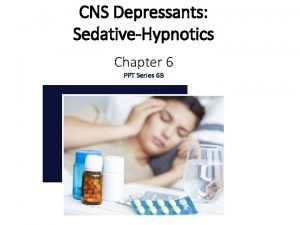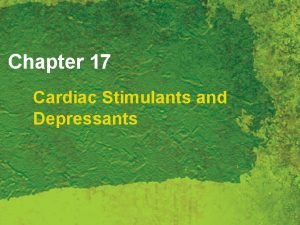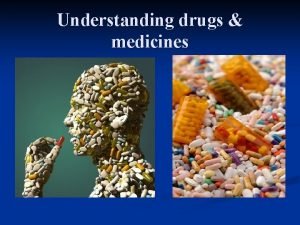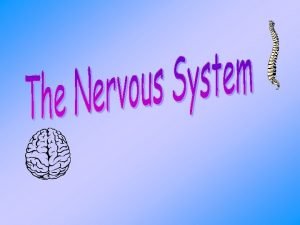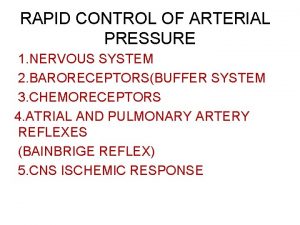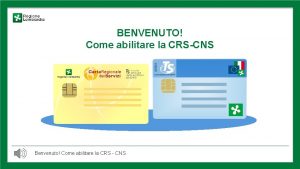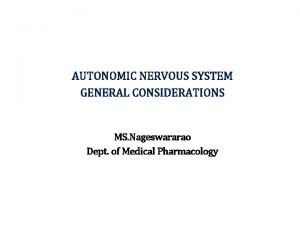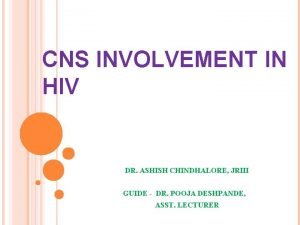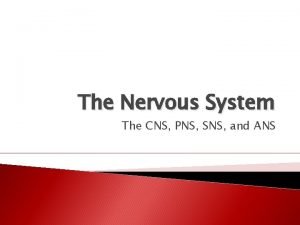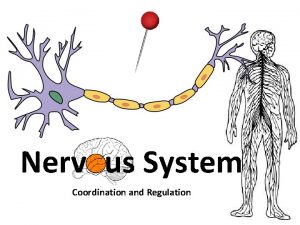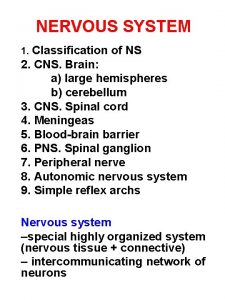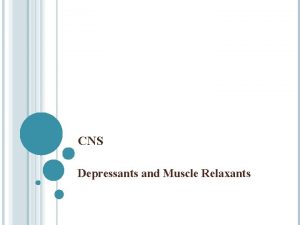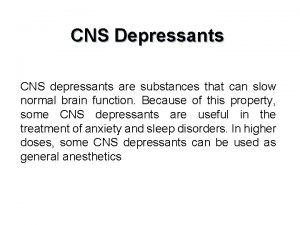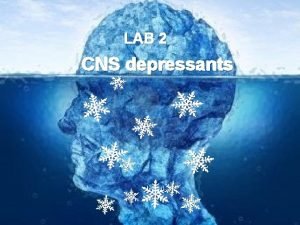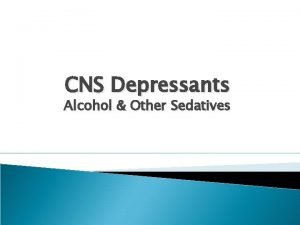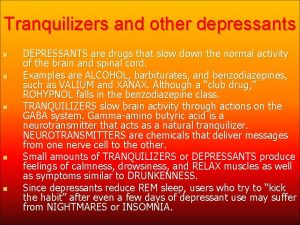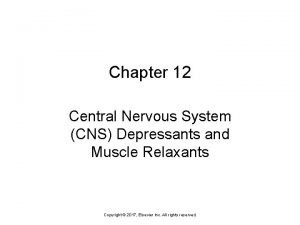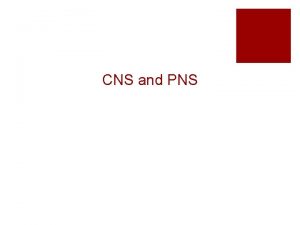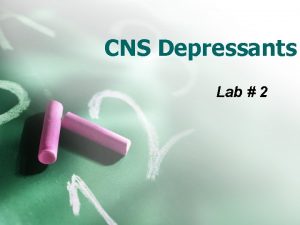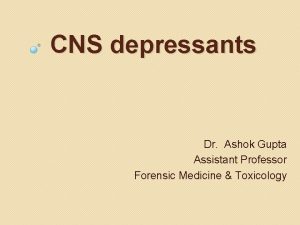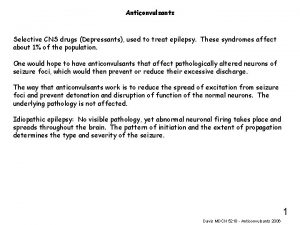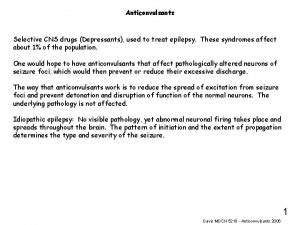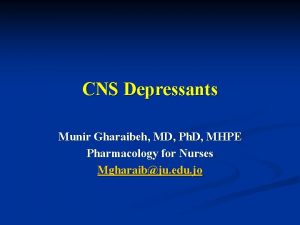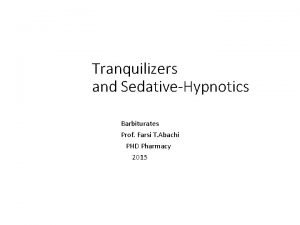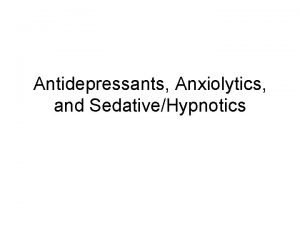CNS Depressants SedativeHypnotics Chapter 6 Introduction to CNS


























- Slides: 26

CNS Depressants: Sedative-Hypnotics Chapter 6

Introduction to CNS Depressants �Why are CNS depressants problematic? 1) CNS depressants are usually not obtained illegally 2) Usually prescribed under physician prescription 3) Second most frequently abused prescription drug (narcotics first) 4) Most problems associated with these drugs due to inadequate professional supervision and chronic use 5) CNS depressants users can exhibit very alarming behavior (not just sedated) and can pose a danger to themselves and others. 6) The user takes seemingly unrelated drugs (cold medicines, alcohol, sleeping pills) together that cause accidental overdose by depressants prompting a medical emergency, and possibly death.

Introduction to CNS Depressants (continued) Seemingly unrelated drug groups can cause CNS depression (see case in point, p. 185)

Discussion Why do you think physicians may be careless when prescribing depressants for patients suffering from anxiety. Discuss what you believe are the dangers of this practice and what other alternate therapies may exist

The History of CNS Depressants Attempts to find CNS depressants that could be used to treat anxiety other than alcohol began in the 1800 s. These attempts lead to the introduction of Bromides in the late 19 th and early 20 th century for therapeutic use to treat anxiety (anxiolytic). Bromides are substances (naturally occurring in sea water and seafood). Specifically, Potassium Bromide was used to treat headaches, and was found to be effective in treating epilepsy (anticonvulsant) Potassium bromide was discontinued as an OTC medication in 1975.

The History of CNS Depressants Bromism is the disease that occurs with chronic use of bromides. Chronic use progressively impairs neuron transmission and presents a series of neurological, psychological, digestive, and dermatological disorders. Cherry angiomas or “Bromide Rash” was one of the most visible symptoms of bromism.

The History of CNS Depressants Because of bromide toxicity, In the early 1900’s, bromides were replaced by barbiturates (discussed later in detail). Like bromides, barbiturates were initially presented as “highly effective and safe”, however, problems with tolerance, dependence, and lethal overdose ensued. Barbiturates therapeutic range typically have a small margin of safety, thus endangering patients with possible respiratory arrest. Because of the small margin of error in therapeutic efficacy of barbiturates, benzodiazepines (discussed later in detail) were introduced in the 1950’s as an “extremely safe” therapeutic alternative to barbiturates.

The History of CNS Depressants Benzodiazepines use has been shown to be safe when used for short periods of time; however, long term use can promote dependency and withdrawal. Many users who become dependent on benzodiazepines begin using the drugs under physician supervision, typically for anxiety, stress, apprehension and/or in combination with counseling. Continued use/ abuse may occur without supervision and when practicing pharmaceutical methods of intervention and treatment.

CNS Depressant Effects: Benefits and Risks • CNS depressants reduce CNS activity and diminish the brain’s level of awareness. • Depressant drugs include: • Benzodiazepines • Barbiturate-like drugs • Alcohol • Antihistamines • Opioid narcotics like heroin

CNS Depressant Effects: Benefits and Risks CNS depressants reduce CNS activity and diminish the brain’s level of awareness. CNS Depressants do present therapeutic benefit as: 1. Antihistamines- treat allergies 2. Anxiolytics –treats anxiety 3. Sedatives – treats anxiety, fear, and apprehension, muscle relaxants 4. Hypnotics* – treats insomnia 5. Anesthesia* – used in surgery * = promotes amnesia (memory loss)

CNS Depressants: Benefits and Risks Dose Dependent Effects The same drug can cause different effects based on dose. Low dose (sedatives— relieve anxiety and promote relaxation) Higher doses (hypnotics —can cause drowsiness and promote sleep) Even higher doses (anesthetics—can cause anesthesia and are used for patient management during surgery)

CNS Depressant Effects: Benefits and Risks As a group, CNS depressant drugs used continuously build tolerance in the user. Because of this continuous use, the drug effects are diminished, and users continue to escalate dosage. Abrupt withdrawal after persistent chronic use and escalating tolerance can result in seizures and death. (During addiction to depressants, brain activity is slowed, so when withdrawn, brain activity speeds up at a rapid rate and may cause seizures). Thus it is common for withdrawal and recovery to occur under medical supervision.

Types of CNS Depressants When considering therapeutic use of CNS depressants, some have wider margins of safety while others may have a greater potential for abuse in therapeutic management, and recreational (non-medical) abuse. The unique features of CNS depressants determine abuse potential. Abuse is more likely to occur with a fast-acting depressant than slower acting (delayed/sustained release) agents.

Types of CNS Depressants: Benzodiazepines Because of benzodiazepines (benzos) wide margin of safety, this drug class has replaced barbiturates for therapeutic application of sedatives and hypnotics. Initially presented as “minor tranquilizers” and the first benzo was developed (Librium) and marketed in 1960 as a sedative and hypnotic, followed by Valium, which was the top selling Rx in the United States from 1972 -1978. Valium usage has been predominately replaced with Xanax and Ativan.

Types of CNS Depressants: Benzodiazepines Because of dependency problems, potential for over prescription, and serious side effects, Benzos classified as Schedule IV drugs (see table, pg. 122 text for Schedule categories). Medical uses for benzos includes: Relief from anxiety, treatment of neurosis, relaxation of muscles, alleviation of lower-back pain, treatment of convulsive disorders, induction of sleep, relief from withdrawal symptoms from narcotic and alcohol dependence, induction of amnesia (pre-surgical)

Types of CNS Depressants: Benzodiazepines Mechanisms of Action 1. Benzos target GABA receptors(A, B) (FYI: allosteric modulator) as a receptor agonist (GABA receptor agonists). Thus, engaging the GABA receptor and promotes inhibitory action. 2. GABA is an important inhibitory neurotransmitter in the Limbic system (alter mood), the RAS (cause drowsiness), and in the Motor cortex (relax muscles)

Types of CNS Depressants: Benzodiazepines GABA Neurotransmitter (FYI)

Types of CNS Depressants: Benzodiazepines Types of Benzodiazepines Many benzodiazepine compounds available in the United States. Benzos are distinguished primarily by their duration of action: short-acting (hypnotics), long-acting (sedatives). Longer acting sedatives have longer half-lives because their liver converted metabolites are as active as the original drug (See Valium and Librium) Table 6 -1 for Half –lives of various benzodiazepinesnext slide…

Types of CNS Depressants: Benzodiazepines

Types of CNS Depressants: Benzodiazepines 8) Menstrual irregularities Side Effects 9) Blood cell 1) Drowsiness abnormalities 2) Lightheadedness 10) Increased sensitivity 3) Lethargy, to alcohol and other 4) Impairment of mental and physical activity 5) Skin rashes 6) Nausea 7) Diminished libido (sex drive) CNS depressants * Benzos do not significantly impair respiration unless taken in very high doses; however serious vital functions can be impacted when benzos are used in combination with other CNS depressants

Types of CNS Depressants: Benzodiazepines Side Effects Even though benzos are effective in treating chronic insomnia, and promote better REM sleep than barbiturates, prolonged use of hypnotic dosing of benzos can cause rebound insomnia and anxiety. Research has not shown that it is easier to stop taking benzodiazepines if a substitute medication is used while reducing the benzodiazepine dose.

Types of CNS Depressants: Benzodiazepines Side Effects Occasionally, benzos can cause paradoxical effects (an effect opposite to the drug effect which would normally be expected). Thus, producing nightmares, anxiety, irritability, and restlessness. Bizarre, uninhibited behavior with extreme agitation, anger, hostility, and paranoia may occur. • Article: “Whitney Houston's Final Days Marked by Erratic Behavior. The singer was "wandering aimlessly" and "belligerent" just days before her death”

Types of CNS Depressants: Benzodiazepines Side Effects There is no confirmed explanation why paradoxical behavior may occur, it is possible that the drug may mask the inhibitory centers (ex. Ethanol also targets GABA receptors) in the brain and allow the presentation of anti-social behaviors that is normally inhibited. Because of the rebound withdrawal effects from benzos, it is difficult for users to terminate use and maintain abstinence from the drug

Types of CNS Depressants: Benzodiazepines Tolerance, Dependence, Withdrawal , and Abuse Chronic benzo use can prompt both tolerance and dependence (physical and psychological). Tolerance and dependence occur with prolonged use (> 4 weeks). Withdrawal symptoms mimic the condition treated by the benzo medication (ex. Withdrawal symptoms = enhanced anxiety for withdrawal from an anxiolytic). Chronic high dose consumption can promote more severe and even life-threatening withdrawal symptoms Table 2 (next slide) identifies Abstinence Symptoms of Benzos

Types of CNS Depressants: Benzodiazepines Severe withdrawal can often be avoided by gradually weaning the user off benzos. Long term use of benzos (3 -4 months) to treat anxiety or sleep disorders has not been shown to be therapeutically useful in most patients. Physicians may supply continued use thinking that they are treating the sleep disorder, but may actually be treating the withdrawal symptoms

Types of CNS Depressants: Benzodiazepines Other methods of abuse: Note how the effects of benzos may place users (either intended or unintended) in danger – Excerpt from text (p. 192) Never Leave an Unattended Drink End of PPT Series 6 A
 Cns depressants ppt
Cns depressants ppt Reeling gait
Reeling gait Cardiac stimulants and depressants
Cardiac stimulants and depressants Depressants affect the__________.
Depressants affect the__________. Ltpd抽樣表
Ltpd抽樣表 Naas cns
Naas cns Haemorrhage
Haemorrhage Histology of cns ppt
Histology of cns ppt Composition of cns
Composition of cns Cns ischemic response
Cns ischemic response Mean bp formula
Mean bp formula Atrail
Atrail Www.lispa.it cns
Www.lispa.it cns Ans and cns difference
Ans and cns difference Tuberculomas
Tuberculomas Depresori cns
Depresori cns Cns international school
Cns international school Cns poruchy
Cns poruchy Mrc scale
Mrc scale Dermatomes
Dermatomes Fhbdf
Fhbdf Thermoreceptors def
Thermoreceptors def Cns ward
Cns ward Cns
Cns Part of central nervous system
Part of central nervous system Cns
Cns Cns classification
Cns classification
